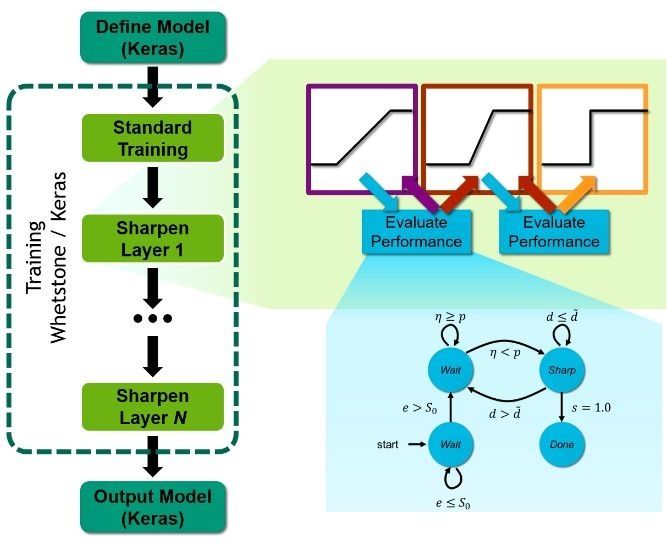Page 9394
Feb 28, 2019
Get ready for a Facebook-sponsored cryptocurrency
Posted by Genevieve Klien in category: cryptocurrencies
Feb 28, 2019
Chemists Grew A “Synthetic Brain” That Stores Memories in Silver
Posted by Quinn Sena in categories: biotech/medical, robotics/AI
“It’s dangerous to directly correlate things like, ‘This is a brain!’” Gimzewski told ZDNet. “It’s exhibiting electrical characteristics which are very similar to a functional MRI of brains, similar to the electric characteristics of neuronal cultures, and also EEG patterns.”
READ MORE: Neuromorphic computing and the brain that wouldn’t die [ZDNet]
More on brain-like circuitry: Brain-Based Circuitry Just Made Artificial Intelligence A Whole Lot Faster.
Continue reading “Chemists Grew A ‘Synthetic Brain’ That Stores Memories in Silver” »
Feb 28, 2019
Immunizing quantum computers against errors
Posted by Genevieve Klien in categories: computing, particle physics, quantum physics
Building a quantum computer requires reckoning with errors—in more than one sense. Quantum bits, or “qubits,” which can take on the logical values zero and one simultaneously, and thus carry out calculations faster, are extremely susceptible to perturbations. A possible remedy for this is quantum error correction, which means that each qubit is represented redundantly in several copies, such that errors can be detected and eventually corrected without disturbing the fragile quantum state of the qubit itself. Technically, this is very demanding. However, several years ago, an alternative proposal suggested storing information not in several redundant qubits, but rather in the many oscillatory states of a single quantum harmonic oscillator. The research group of Jonathan Home, professor at the Institute for Quantum Electronics at ETH Zurich, has now realised such a qubit encoded in an oscillator. Their results have been published in the scientific journal Nature.
Periodic oscillatory states
In Home’s laboratory, Ph.D. student Christa Flühmann and her colleagues work with electrically charged calcium atoms that are trapped by electric fields. Using appropriately chosen laser beams, these ions are cooled down to very low temperatures at which their oscillations in the electric fields, inside which the ions slosh back and forth like marbles in a bowl, are described by quantum mechanics as so-called wave functions. “At that point, things get exciting,” says Flühmann, who is first author of the Nature paper. “We can now manipulate the oscillatory states of the ions in such a way that their position and momentum uncertainties are distributed among many periodically arranged states.”
Feb 28, 2019
Rare ‘semi-identical’ twins discovered during Australian woman’s pregnancy
Posted by Genevieve Klien in category: biotech/medical
A rare set of semi-identical twins – only the second set ever reported in the world – have been identified in Australia.
The now 4-year-old boy and girl from Brisbane share all of their mother’s DNA but only a part of their father’s DNA, making them identical on their mother’s side but fraternal on their father’s, a statement detailing the discovery said.
This was also the first time semi-identical twins have been identified during pregnancy, according to a case report recently published in the New England Journal of Medicine.
Continue reading “Rare ‘semi-identical’ twins discovered during Australian woman’s pregnancy” »
Feb 28, 2019
Gene Editing Is Trickier Than Expected—but Fixes Are in Sight
Posted by Genevieve Klien in categories: bioengineering, biotech/medical
A popular gene editing technique may produce lots of unintended changes to DNA, but the good news is we now have a better way of finding such errors.
Feb 28, 2019
Whetstone: A New Tool for Neuromorphic Programming
Posted by Caycee Dee Neely in category: robotics/AI
This recent development should speed brain emulation and help bring more deep learning closer to the device.
Whetstone is a program for instituting Spiking Neural Networks for Artificial Intelligence. It was created by Sandia National Laboratories and is available as Open Source Code. The most modern vers…
Feb 28, 2019
Boosting Cellular Housekeeping with Exercise and Fasting
Posted by Steve Hill in categories: biotech/medical, health, neuroscience
In order to remain healthy and functional, cells have a number of maintenance systems that help them to dispose of metabolic waste and unwanted proteins. Autophagy is perhaps the best-known example of how cells purge their waste, and another is the ubiquitin-proteasome system (UPS). Researchers are working on ways to boost the activity of the UPS to improve cellular health.
The ubiquitin-proteasome system
During normal cellular function, proteins being constructed in the cell can sometimes become misfolded and start to accumulate over time, which can cause the cell to become dysfunctional and encourage diseases such as Alzheimer’s to develop as the system gums up with bent and broken proteins.
Continue reading “Boosting Cellular Housekeeping with Exercise and Fasting” »
Feb 28, 2019
Scientists Give Mice “Super Vision” With Eye Injections
Posted by Klaus Baldauf in categories: entertainment, nanotechnology
It’s something straight out of a Marvel comic book: giving test subjects the ability to see infrared light, similarly to how night-vision goggles work — but without the awkward and bulky apparatus.
Scientists at the University of Science and Technology of China injected tiny nanoparticles that bind to the retina into the eyeballs of test mice, granting them what the researchers called “super vision.”
Feb 28, 2019
New Wearable Respiratory Sensor Will Monitor a Child’s Every Breath
Posted by Jeffrey L. Lee in categories: biotech/medical, engineering, wearables
Michelle Khine is a professor of biomedical engineering at the University of California, Irvine. Nine months ago, her newborn son was hospitalized for complications during childbirth and was admitted to the neonatal intensive care unit (NICU). While in the NICU, her son was connected to several machines that were supplying oxygen and monitoring his breathing.
A biomedical engineering research team from the University of California has developed a new wearable respiratory sensor to monitor children with chronic pulmonary conditions. The design was built with inspiration from a favorite childhood toy, Shrinky Dinks.
















